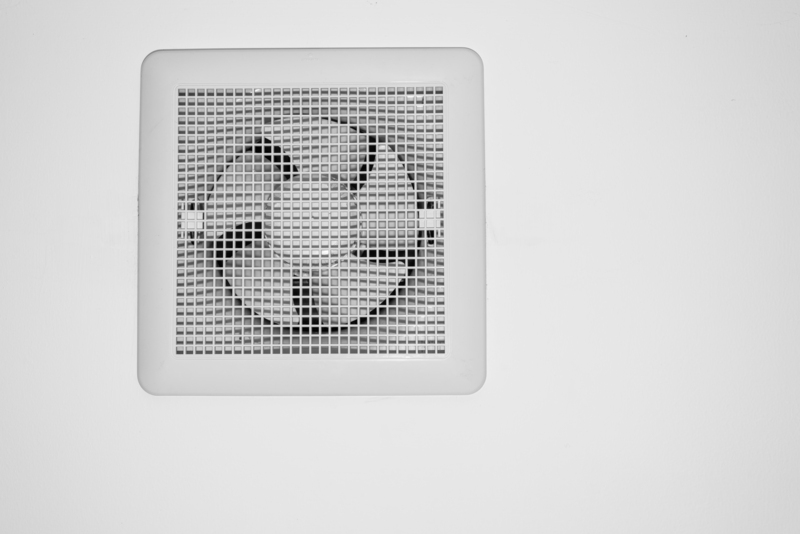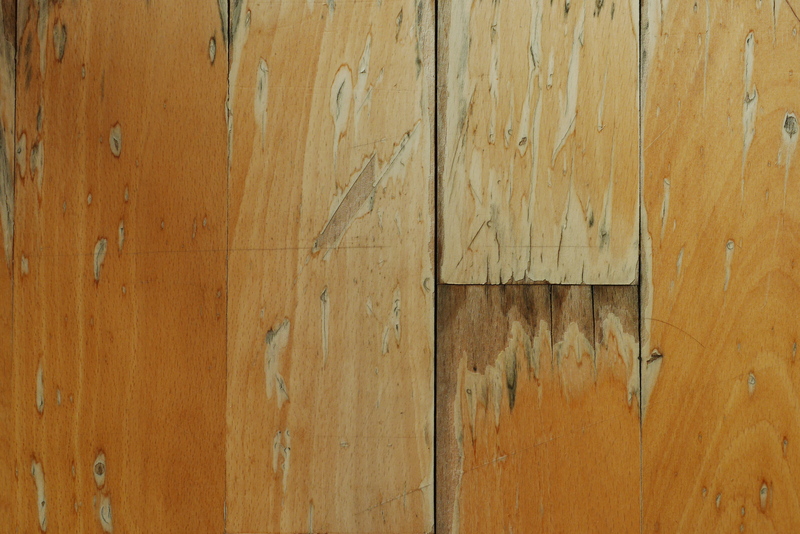Grease-Free Zone: Easy Techniques for Enamel Oven Tray Cleaning
Posted on 14/09/2025
Grease-Free Zone: Easy Techniques for Enamel Oven Tray Cleaning
Enamel oven trays are household kitchen staples, prized for their durability and ability to produce evenly cooked meals. However, dealing with stubborn grease, burnt-on food, and grime can turn cleaning these essential trays into a dreaded chore. If you're searching for effective, fuss-free ways to restore your enamel oven trays to their former gleaming condition, you've come to the right place. This article offers comprehensive, SEO-optimized cleaning techniques that will help you achieve a grease-free zone in your kitchen.

Why Proper Cleaning Matters for Enamel Oven Trays
Before diving into various methods, understanding the importance of keeping your enamel oven tray clean is crucial. Regular cleaning ensures:
- Improved food hygiene - Prevents bacteria buildup from food residue.
- Enhanced longevity - Maintains the tray's enamel coating, preventing chips, cracks, and rust.
- Optimal cooking performance - Ensures even heat distribution and prevents smoke from burned grease.
Ace your kitchen routines by following simple, effective steps for a spotless oven tray, and keep your cooking zone a grease-free sanctuary.
Understanding Your Enamel Oven Tray
Enamel oven trays are made by coating metal, often steel or cast iron, with powdered glass that fuses when fired at high temperatures. This process creates a hard, glossy, and non-porous surface that resists stains and corrosion. Despite its resilience, improper cleaning or use of harsh cleaners can damage the enamel finish, leading to rust and decreased performance.
Common Challenges When Cleaning Enamel Oven Trays
- Sticky, stubborn grease and oil residue
- Burnt-on food and carbon deposits
- Discoloration and tough stains
Let's explore the safest, most effective cleaning solutions designed specifically for enamel oven tray cleaning.
Easy, Effective Methods for Grease-Free Enamel Oven Tray Cleaning
1. Soap and Hot Water Soak
This go-to technique is gentle and effective for everyday cleaning. Here's how to achieve a sparkling enamel tray with minimal effort:
- Fill your sink or a large container with hot water and add a generous squirt of dish soap.
- Submerge the oven tray and allow it to soak for at least 30 minutes.
- Use a soft sponge (never abrasive scourers) to wipe away grease and food residue.
- Rinse thoroughly with warm water and dry with a soft cloth.
Tip: For light grease, this may be all you need. For tougher stains, proceed to the next method.
2. Baking Soda and Vinegar Magic
If grease and grime won't budge, the power of natural cleaning agents can help. Baking soda and vinegar are kitchen heroes for a reason:
- Sprinkle a generous layer of baking soda over the affected areas of your enamel oven tray.
- Pour white vinegar over the baking soda. The resulting fizz helps break down stubborn debris.
- Let the mixture sit for 15-20 minutes for optimal results.
- Gently scrub with a non-abrasive sponge, then rinse and dry.
This grease-free oven tray technique is chemical-free and safe on delicate enamel finishes.
3. Paste of Baking Soda and Water
Baking soda alone is a gentle abrasive, perfect for enamel tray cleaning:
- Mix baking soda with a bit of water to form a spreadable paste.
- Apply paste to stubborn stains or burnt spots. Let rest for 30-45 minutes.
- Scrub gently, focusing on tough spots but avoiding scratching the surface.
- Rinse thoroughly and dry with a clean towel.
4. Lemon and Salt Scrub
Harness the natural citric acid of lemon for a
- Sprinkle coarse salt over the tray.
- Use half a lemon to scrub in circular motions, letting the juice and salt work together.
- Let sit for 10 minutes, then rinse thoroughly.
This technique removes odours and leaves your enamel oven tray looking fresh and clean.
5. Dishwasher-Safe? Use the Right Cycle
Many enamel trays are dishwasher-safe, but always check manufacturer guidance. If so:
- Place the oven tray upright to maximize exposure to water jets.
- Use a mild or regular dishwasher detergent.
- Select a cycle suitable for pots and pans, avoiding high-temperature drying if not recommended.
Pro Tip: Wash trays promptly after use - dried-on grease can become more persistent over time.
Targeting Burnt-On Grease and Stubborn Residue
6. Boiling Water and Baking Soda Method
For especially stubborn, burnt-on grease, try this heavy-duty cleaning approach:
- Fill the tray with boiling water (be careful!) to cover affected areas.
- Add a few tablespoons of baking soda and stir gently.
- Let soak 1-2 hours, then empty and scrub gently.
Warning: Ensure the tray is placed on a stable, heat-resistant surface to prevent burns or damage.
7. Commercial Enamel-Friendly Cleaners
High-quality, non-abrasive oven and cookware cleaners can make quick work of grease, provided they are safe for enamel. Look for:
- No bleach or harsh chemicals: These can corrode enamel and compromise its integrity.
- PH neutral formulas: Designed for delicate surfaces.
- Follow package directions carefully for best results and safety.
Note: Never use steel wool, scouring pads, or harsh powders, as these can irreparably scratch the enamel surface.
Preventative Tips: Keep Your Enamel Oven Tray Grease-Free
The best defense against tough grease is a proactive cleaning routine. Learn how to minimize residue and increase the lifespan of your enamel trays:
- Line your tray with baking paper or aluminum foil during messy roasts and bakes.
- Clean after each use - don't allow grease to build up over time.
- Avoid sudden temperature changes, which can cause the enamel to crack.
- Store properly - keep out of reach from sharp objects that could damage the surface.
Spotting and Addressing Enamel Damage Early
- Check for chips and cracks: Damaged enamel exposes the underlying metal, fostering rust and further loss of non-stick qualities.
- Cease using heavily chipped trays, especially for cooking acidic foods, as this can accelerate deterioration.
Eco-Friendly and Safe Cleaning Alternatives
Many people wish to avoid strong chemicals for both health and environmental reasons. Fortunately, natural solutions are highly effective for enamel oven tray cleaning:
- Baking soda: Versatile, non-toxic, and gentle on enamel.
- Vinegar: Cuts through residue and neutralizes odors.
- Lemon juice: Naturally antibacterial and deodorizing.
- Hydrogen peroxide: Mixed with baking soda for extra cleaning oomph (test first on a small area).
By adopting grease-free oven tray cleaning methods that are safe, economical, and eco-conscious, you protect your kitchen appliances and the environment.

Frequently Asked Questions: Enamel Oven Tray Cleaning
How do you get baked-on grease off enamel oven trays?
For heavily baked-on grease, use soaking methods with hot water and baking soda, followed by gentle scrubbing. For extra stubborn stains, use a baking soda paste or commercial enamel-safe cleaner.
Can I use abrasive pads to clean enamel trays?
Never use steel wool or abrasive pads on enamel trays. These will scratch the surface, compromising the nonstick qualities and appearance.
Are all enamel trays dishwasher safe?
Not all enamel oven trays are dishwasher safe. Always check the manufacturer's instructions. When in doubt, hand-washing is the gentlest option.
How do I remove discoloration from my oven tray?
Try a soak with baking soda and vinegar, followed by soft scrubbing and rinsing. Persistent discoloration may require repeated applications or a specialized cleaner formulated for enamelware.
Is it safe to leave oven trays soaking overnight?
It's generally safe to leave enamel oven trays soaking in soapy water overnight for heavy buildups, but avoid prolonged soaks in solutions with acidic ingredients, as this can eventually weaken the enamel.
Summary: Achieve a Grease-Free Zone in Your Kitchen
Keeping your enamel oven trays spotless and grease-free doesn't require harsh chemicals or intense elbow grease. By using gentle, effective methods with common household ingredients, you can prolong the life of your trays, maintain a hygienic cooking space, and restore their original luster.
- Start with basic soapy soaks for everyday mess.
- Apply natural busters like baking soda, vinegar, and lemon for stuck-on stains.
- Reserve commercial cleaners for only the most stubborn grime, and always check they're enamel-safe.
With these easy techniques for enamel oven tray cleaning, your kitchen will remain a true grease-free zone, where delicious meals leave only happy memories--not stubborn stains.



